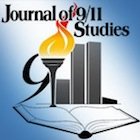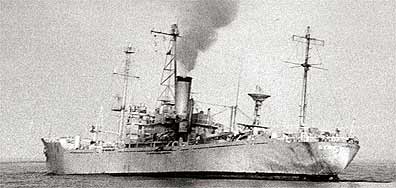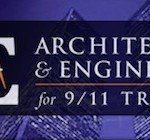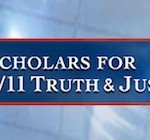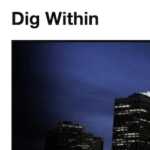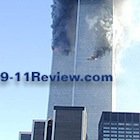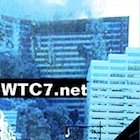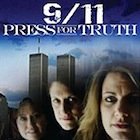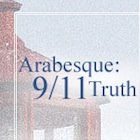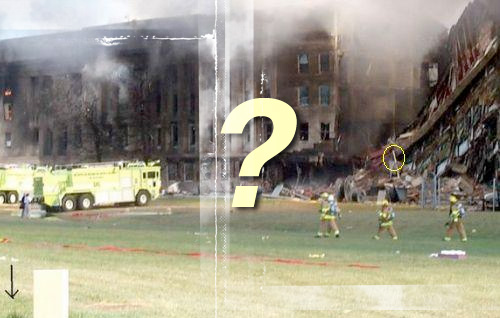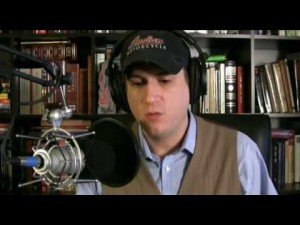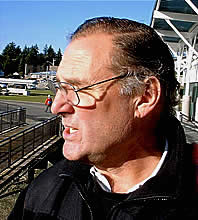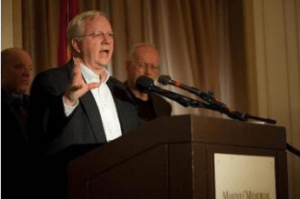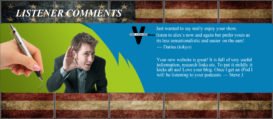source: Journal of 9/11 Studies
dateline: July 31, 2009
Answer: a) Nothing should have b) Show us the tapes c) All of the above
by Dr. Frank Legge, Ph.D.
The position I hold is simple. In answer to the question “What hit the Pentagon?” I say I don’t know and attempt to turn the discussion to the more fundamental question “Why was the Pentagon hit?”. It should not have been. It should have been well defended. Flight 77, a Boeing 757, was the third plane hijacked, so there was ample time to confirm that real hijackings were taking place, not a war game, and ample time to send up fighters to intercept, as is the normal procedure. One presumes that there were also anti-aircraft defenses round the Pentagon, as it is the hub of the military machine.
Important to this debate is the video testimony of the Secretary for Transportation, Norman Mineta, to the 9/11 Commission. He came into the bunker under the White House and saw that the Vice President, Dick Cheney, was already there. A young man came in and said to Cheney “The plane is 50 miles out”, then he came in again and said “The plane is thirty miles out”, and when it got down to 10 miles out the young man also said “Does the order still stand?” and Cheney angrily confirmed that it did. Shortly after this something dramatic happened at the Pentagon. There is little doubt that Cheney had it in his hand to shoot down this plane but had a reason not to do so.
There are now several theories about what hit the Pentagon. One is the official story, that a 757 approached at a low angle, striking light poles, then struck the Pentagon. Many eye witnesses confirm this path. The outer masonry wall was destroyed to an extent sufficient to allow the heavy parts of the plane to enter and slide into the Pentagon at ground level, between the supporting steel-reinforced columns, many of which were bent and broken. The trail of damage was in line with the damaged light poles. The lighter parts that failed to penetrate the wall would have been fragmented by the high velocity impact.
The early alternative theory was that a missile hit the Pentagon. This concept apparently originated from observation of the small circular hole in the inner wall.
Finally we have a theory based on a flight data recording which came into the hands of the 9/11 truth movement. Calum Douglas gave the first presentation on this at Ipswich, as will be discussed below. This flight data describes a path which is too high and at the wrong angle to have produced the observed damage. Claims have been made that several eye witnesses support this path.
There has been heated debate about what hit the Pentagon. At first glance it appears that the 757 could not have hit the Pentagon because there appeared to be too little debris, and too little damage at the impact site. It is very attractive to find evidence to support these claims because, if true, it would prove once and for all that the official story is a pack of lies, and many people have tried very hard to do so. However if you look at the evidence carefully you will find that it cannot be conclusively proved that no 757 hit the Pentagon. This doesn’t matter in the overall 9/11 analysis, however, because there is ample evidence that explosives were used at the World Trade Centre, and that is sufficient to prove that the official story is false and that the NIST report is nothing more than an artful cover-up. The first thorough scientific exposition of the evidence for explosive demolition was that of Professor Steven Jones in 2006. An updated version is here. A summary of some of the scientific milestones in the development of the explosive demolition theory is presented here.
The debate
The argument that something other than flight 77 damaged the Pentagon is based on several assertions as follows:
1. Too little debris. There is at least one photograph which shows ample small fragments scattered over a wide area. The debris reaches past the helicopter landing pad, some distance away from the impact site.
One has to conclude that those photos which show little debris have resulted from the foreshortening which occurs when the camera is at a distance and close to the ground. There are photos which show debris identifiable as the engine rotor and wheel of a 757. There are photos which show men in white shirts and black trousers, not ordinary workers, hastily collecting debris from the lawn. A point often missed is that the interior walls did not reach the ground. Once the outer wall was penetrated there was little to restrict the debris from sliding among the support columns.
The authorities released a video purporting to show what hit the Pentagon but it did not do so. The video did, however, show some substantial pieces of debris flying high up in the frame. See it at Judicial Watch, video 1: http://www.judicialwatch.org/archive/2006/flight77-1.mpg You will also see five pieces of debris land and bounce across the road just in front of the camera. Consider the force required to project the pieces so far. If there are similar amounts from here all the way to the impact site, and on the other side as well, there will be a very great number of pieces not previously taken into account. This appears to be a missed piece of evidence for a powerful explosive charge being set off at, or just before, impact. The video also shows an intense white flash just before the red fire ball from combustion of the dispersed fuel. This white flash, very different from the fire ball, is further evidence for the use of explosives.
If explosives were used to destroy the plane you would not expect it to make a perfect impact mark on the building, as happened at the towers, nor would it leave much in the way of large easily recognized pieces.
2. Hole too small. The photo most often displayed shows a hole too small to admit a 757, however the lower part of the photo is obscured by water spray from a fire truck. This question has been carefully studied. Jim Hoffman has collated information from a number of photos taken prior to the collapse of the front wall which shows that the entry hole is wide enough to admit both motors and at least the lower and heavier parts of the fuselage of a 757. There are marks beyond this but they do not reach as far as the wing tips. He shows that the damage to the building and the light poles more closely matches a 757 than a smaller aircraft.
http://911review.com/errors/pentagon/smallhole.html
http://911research.wtc7.net/essays/pentagon/index.html
It may of course be argued that the pole damage was faked.
It is not surprising that the marks on the wall are hard to see as that section of the Pentagon had recently been reinforced. Why did the plane aim for the reinforced section, which still had few occupants due to the recent renovation? Would al Qaeda have wanted to minimize casualties? Why did it not hit the relatively weak roof? There were auditors in the damaged section who were investigating the loss of trillions of military dollars. Most of the auditors died, which has led to considerable speculation regarding motive. Who would wish to kill auditors? http://911research.wtc7.net/sept11/victims/pentagonkilled.html
3. The plane could not have withstood the spiral dive observed. This is not true. The angle of bank required would have been higher than normal for a passenger plane but calculations show that the g-force on the plane was well within design capability. http://www.911review.com/errors/pentagon/aerobatics.html
4. The pilot was not competent to perform the navigation or the accurate approach. There is evidence that the hijackers were more interested in learning to fly than to take off or land. That was suspicious in itself and caused some FBI reports to be made which were apparently blocked. Michael Ruppert suggests it was Dave Frasca who saw to it that the reports did not get through,1 thus allowing senior staff to claim “plausible deniability”. It is reasonable to believe that, with a little use of GPS, hijackers could have navigated to their targets and it is not hard to point a plane at a wall. Also the ability to fly planes without pilot
assistance was established well before 9/11.2 It requires the fitting of equipment to take over control of the autopilot. Investigation of the wreckage was carried out by the National Transport Safety Board (NTSB), as is usual, however this was not an accident but a crime scene, hence control was in the hands of the FBI. This secretive organization would not be expected to reveal any information which would incriminate it, so it is not surprising that we know little about what equipment was found.
The radar record of flight 77 shows a short period on the return leg, and another near the end, in which substantial erratic fluctuations in altitude occur.4 The record also shows that the plane was initially far too high in its approach. Its controllers had to perform a descending circuit to lose height, thereby exposing the plane to much greater risk of detection and interception. Both these observations suggest inexpert human control. Whether the planes were flown by hijackers or by a pre-programmed on-board device is still an open question; neither is ruled out by available evidence, but the answer is not essential to the case.
5. Ground effect would have prevented the 757 from hitting at ground level. This is often repeated but is not valid. The plane was descending at an angle of about 1 in 20 which is normal for a plane on final approach for landing. Anyone who has learned to fly a plane knows that it is essential to pull back on the control column before touch-down. This action is known as the “flare”. Without a flare there will be a very severe impact with the runway. Clearly ground effect is not sufficient to keep a descending plane off the ground, even at normal approach speed. With the very high approach speed at the Pentagon, ground effect would have been even less effective and only present in the last couple of seconds of the approach. This could not deflect the plane, given its huge momentum at high speed.
Calum Douglas Flight Data Recorder Presentation in Ipswich
This interesting work, which can be viewed at http://www.pilotsfor911truth.org/, provides data showing the flight path of a plane. The data terminates near the Pentagon, far too high, and coming from the wrong direction, to have hit the light poles. This data path is mostly smooth and consistent with a plane flying on auto pilot but there is a short section on the return leg, and another near the end, in which there are wild variations in altitude, just as was observed with the radar trace. As a plane on this path could not have done the observed damage some argue that the plane flew over the building and that the damage was done by something else. The overfly theory has met with substantial opposition.
What is quite certain is that this flight data and the official report are contradictory. One or other, or both, must be untrue. The flight data is just as likely to have been faked as the photos of the 757 components in the debris.
Inferences from Contradictory Evidence
Much time has gone by since 9/11 and it would have been very easy for the authorities to provide clear evidence to answer the question “What hit the Pentagon?” and set our minds at rest. A useful perspective is to consider the attack on the Pentagon as if it were a stage play. On the stage we, the audience, have seen actors playing parts in a mystery thriller, full of convincing details. We speculate at length on the clues as we enjoy a glass of wine after the show. Eventually we realize that the question of the identity of the criminal was deliberately left unanswered. Next day the media critics give the author high praise for skillfully tantalizing us right to the end.
The most logical inference from the Pentagon attack evidence is that the perpetrators of 9/11 knew that there would be many members of the public who would become suspicious for one reason or another. The perpetrators realized that a powerful technique for weakening the arguments of the skeptics would be to have them arguing against one another. Like a good playwright they balanced contradictory evidence to keep the public guessing. On cue the media critics gave the NIST report high praise and we were left guessing about the actions and motives of the people behind the curtain.
The Precautionary Principle
As stated above the authorities could easily show what hit the Pentagon, as they have many video tapes of the event. That they choose not to do so must be because they want the investigators to argue against one another. This has worked well for them so far. Those who are not convinced that a 757 hit the Pentagon should bear in mind that it is possible that they have been deliberately deceived by false evidence. In this scenario the perpetrators would be keeping evidence in reserve so that if investigators ever achieve some degree of consensus that no 757 hit the Pentagon they will produce the evidence that it did. This will throw the 9/11 truth movement into disarray and create crippling loss of credibility. Application of the precautionary principle would result in investigators taking care to avoid the assertion that the 757 did not hit the Pentagon. The purpose of this essay is to make this scenario less likely to occur and, if it does occur, to provide some immunity from its effects.
Summary
The evidence for what hit the Pentagon is contradictory. It is likely that contradictory evidence has been deliberately provided. There are some who assert that there was not enough debris for a plane crash and that a plane could not have penetrated as far as the observed damage. However the plane would only have had to destroy part of one wall for most of its material to be able to slide among the support columns. There is photographic evidence of plane parts that are undeniably from a 757, however they could have been planted. There is evidence of a powerful explosion which would have changed the structure of the plane and its impact marks. If a missile had been involved, something else must have been involved as well to make these marks. If it was a plane that made the marks, there are two competing and contradictory stories about its flight path. How are we to deal with this confusion?
There are two essential points to note:
1. Nothing should have hit the Pentagon. This implies a stand down order existed, as appears to be confirmed by Mineta’s testimony to the 9/11 Commission.
2. The authorities could easily show us what hit the Pentagon but they do not. Together these provide prima facie evidence that the official explanation of the event at the Pentagon is false and that a cover-up exists. This is sufficient to demand a new investigation, regardless of what hit the Pentagon.

